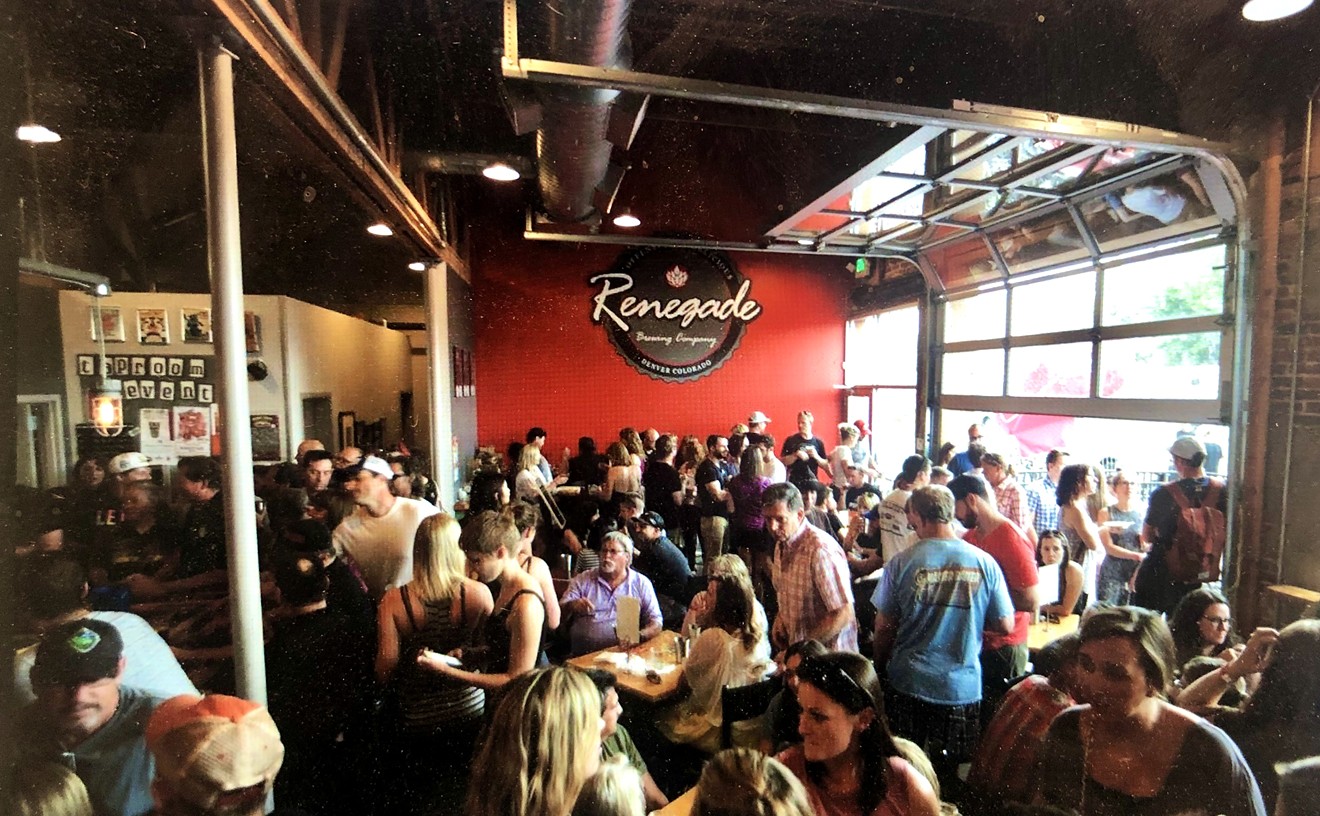The Ramos Gin Fizz at Union Lodge No. 1.
Vintage cocktails like the Manhattan and the Old Fashioned get a lot of attention these days. They allow barroom patrons to enjoy an archetype from the early days of America’s cocktail culture — along with modern adaptations by creative bartenders. But when Union Lodge No. 1 opened on May 1, bar manager Alex Daniluk’s cocktail menu reached back before Prohibition — to the late 1800s — to find lesser-known libations, such as the Ramos Gin Fizz.
“It really pushes what we’re going for,” Daniluk says. “It’s that 1800s style of handcrafting cocktails — putting a lot of time and a lot of effort into every cocktail. It definitely takes a lot longer, but it’s worth it in the end.”
To his surprise, Daniluk found that the Ramos Gin Fizz began to immediately outsell any other cocktail he made at Union Lodge. The original recipe, created by bar owner Henry Ramos in New Orleans in 1888, took up to twelve minutes to prepare (Daniluk’s version has been pared down to just four minutes). His recipe contains the usual gin, lemon juice, egg white, sugar, cream, orange flower water and soda water, to which he adds sloe gin, vanilla extract and a few drops of a housemade berry tincture to make Union Lodge’s popular rendition.
As the story goes, Ramos invented the drink he called the New Orleans Fizz (which was later named after the inventor) as a gin drink. But his secret ingredient was orange flower water, which gave the cocktail a refreshingly light, floral essence. It was truly a secret, too: Ramos’s bartenders kept the recipe under wraps, mixing the ingredients and handing the shaker tins off to “shaker boys” whose only task was to shake the ingredients for twelve minutes at a time. They didn’t know what they were shaking, and the drinkers didn’t know what they were drinking. But they loved it.
What was happening inside those shakers was the agitation of egg whites, which increased in volume as they became infused with air. The result was a drink with a thick mouthfeel and a luxurious texture. Even in the heat of a New Orleans summer, the booze intermingled with the eggs and cream to create a refreshing drink. Ramos often employed up to twenty shaker boys, working simultaneously to keep up with the demand for his cocktail.
“Traditionally, it’s made with Old Tom gin,” Daniluk says. “Old Tom gin is basically a sweetened gin, which is an older style of gin.” The British, Daniluk says, used most of their barley for making beer, leaving grain of a lesser quality for making gin. That rough gin required more juniper — and the addition of sugar, honey or some other sweetener — to make it more palatable. Daniluk uses Hayman’s Old Tom gin, still made in England according to an 1870s family recipe. It’s softer and smoother than popular London dry gins, which don’t contain sugar or sweeteners. “Hayman’s is a very classic style,” he says.
“The original tastes kind of like a key lime pie, which is really good on its own,” Daniluk says, “but I wanted it to be a little bit more complex. I wanted to add a berry flavor, so I added sloe gin. It tastes like cranberries — or tart blackberries. It’s definitely very tart and kind of hard to use on its own.” Sloe gin is made with sloe berries, the fruit of the blackthorn bush. British farmers long ago found that the berries were basically inedible but could be used to flavor that rough gin they were making. Daniluk uses Plymouth sloe gin, a slightly tart, fruity, purple-colored gin made in England since 1883.
“I messed with mixing different flavors like raspberry and peaches, and I liked the combination of sloe gin, but I wanted more berry flavor,” Daniluk says, “so I created a berry tincture. It’s not in the original recipe. I added it later to give it more of a fruity, berry flavor.”
To make his tincture, Daniluk macerates strawberries, blueberries, raspberries and rhubarb in grain alcohol for up to four weeks. “Alcohol absorbs flavor better than water, so it gets really concentrated,” he says. “After about four weeks, I’ll strain it off and it just becomes a really concentrated fruit flavor, so I can use just a couple dashes of it.”
But the key ingredient, Daniluk says, is the orange flower water: fresh orange blossoms infused in water and then distilled to concentrate the floral notes. “That was the secret ingredient that no one could really put their finger on,” he says. “It’s what kept Henry Ramos’s bar in business. It definitely adds a floral element that kind of lightens it up a little bit.” It’s the orange-scented water, Daniluk says, that keeps the drink from being dominated by the gin’s juniper flavor.
Daniluk’s recipe, made without the help of shaker boys, still takes four minutes to prepare. He combines both gins, the white from one fresh-cracked egg, fresh lemon juice, heavy whipping cream, sugar, vanilla extract, orange flower water and a few dashes of his housemade berry tincture with two ice cubes in a shaker tin. Sealing it tightly, he begins to shake.
“You keep shaking until you can’t shake it anymore,” Daniluk says, “then you keep going a little bit longer. When you open it, you can kind of see the foam starting to solidify a little bit, and then you know it’s ready.”
Daniluk will shake until the two ice cubes have completely melted before letting the tin rest while filling a tall glass with about two ounces of soda water. Emptying the shaker tin into the glass on top of the soda water helps to add even more air into the now-foamy mixture. Tapping the sides of the glass, he coaxes the gas out of the soda water and into the drink. As he adds more of the mix, the foam solidifies and rises up past the rim of the glass.
“It’s a mix of the egg white, the heavy whipping cream and the carbonation from the soda,” he says of the drink’s thick, foamy character. “All that kind of combines together to create that really thick cream.”
While the thick mixture could end up tasting like melted ice cream, the gin and orange flower water keep it light and enjoyable. “It really is refreshing,” Daniluk admits, “which is surprising for an egg-white cocktail. But it’s really popular, and probably the biggest reason for that is the foamy head that rises above the rim of the glass. People don’t expect that, and as soon as I make one, two more people want one, and two more after that, and two more after that.”
“It’s definitely a drink that, visually, people just don’t expect it, and it’s surprising to them,” Daniluk says. “It’s just really easy to go down. The biggest problem we have is that people forget there’s alcohol in it, and they have four or five of them and have to call a cab.”
Ramos Gin Fizz
1 egg white
2 ounces heavy whipping cream
1 ounce Hayman’s Old Tom gin
1 ounce Plymouth sloe gin
.75 ounce lemon juice
.75 ounce simple syrup
3 dashes orange flower water
2 dashes house-made berry tincture
1 dash vanilla extract
Soda water
Pour all ingredients except soda in a mixing tin. Add two ice cubes, and shake for three or four minutes, until the ice is melted. Add two ounces of soda water to a tall glass, then strain the contents of the shaker tin into to the glass, tapping the sides as you pour to release the carbonation into the cocktail. Allow the contents to rise above the rim of the glass. Garnish with a blackberry.
[
{
"name": "Air - MediumRectangle - Inline Content - Mobile Display Size",
"component": "12017618",
"insertPoint": "2",
"requiredCountToDisplay": "2"
},{
"name": "Editor Picks",
"component": "17242653",
"insertPoint": "4",
"requiredCountToDisplay": "1"
},{
"name": "Inline Links",
"component": "18838239",
"insertPoint": "8th",
"startingPoint": 8,
"requiredCountToDisplay": "7",
"maxInsertions": 25
},{
"name": "Air - MediumRectangle - Combo - Inline Content",
"component": "17261320",
"insertPoint": "8th",
"startingPoint": 8,
"requiredCountToDisplay": "7",
"maxInsertions": 25
},{
"name": "Inline Links",
"component": "18838239",
"insertPoint": "8th",
"startingPoint": 12,
"requiredCountToDisplay": "11",
"maxInsertions": 25
},{
"name": "Air - Leaderboard Tower - Combo - Inline Content",
"component": "17261321",
"insertPoint": "8th",
"startingPoint": 12,
"requiredCountToDisplay": "11",
"maxInsertions": 25
}
]










